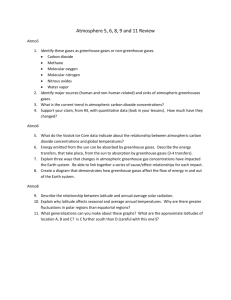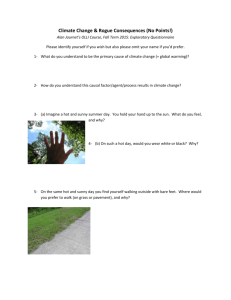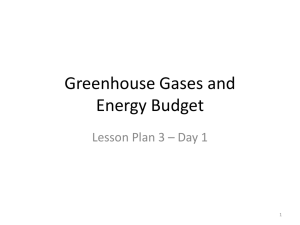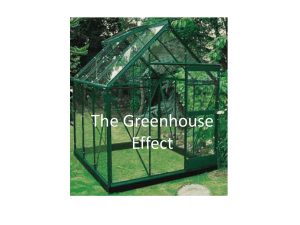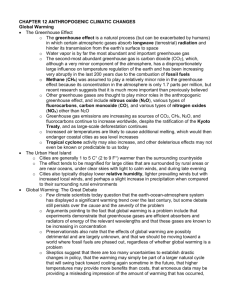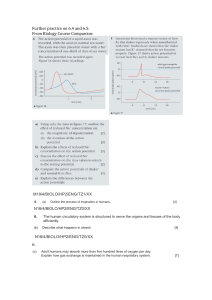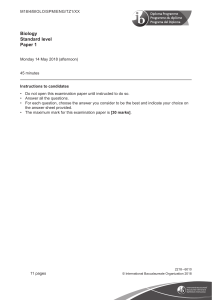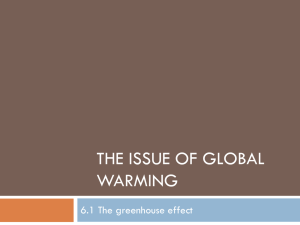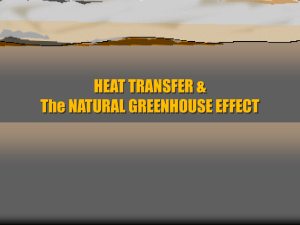5.2 Greehouse effect
advertisement
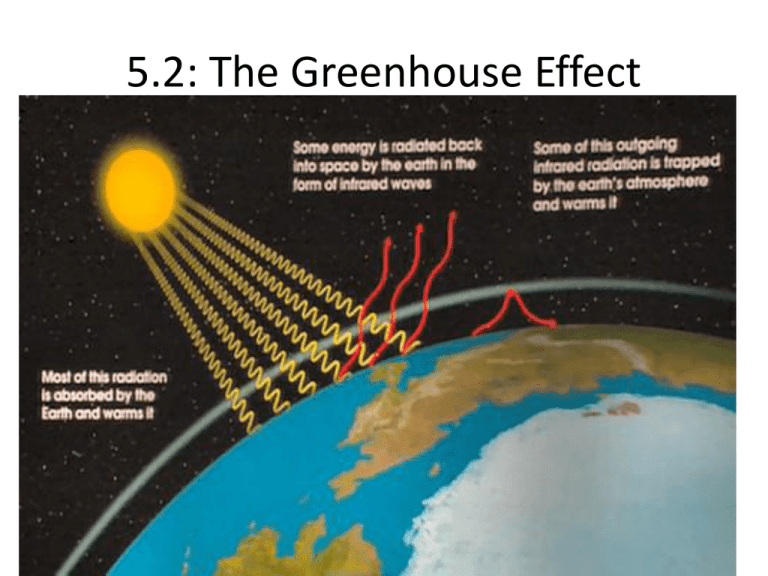
5.2: The Greenhouse Effect 5.2.1: Carbon cycle M06/4/BIOLO/SP2/ENG/TZ1/XX Draw a labelled diagram showing stages of the carbon cycle. [5] 5.2.2: CO2 concentration 5.2.3:Greenhouse gases Explain the relationship between rises in concentration of atmospheric gases and the enhanced greenhouse effect. [8] N10/4/BIOLO/HP2/ENG/TZ0/XX Award [2 max] from the following list of greenhouse gases: water vapour; carbon dioxide; methane; oxides of nitrogen; all (of these gases) occur naturally; and human activity has increased the normal level of these gases in recent years; incoming shorter wave radiation from the Sun; is re-radiated as longer wave radiation/infrared; (mainly) in the form of heat; captured by greenhouse gases; which increases the atmospheric/ocean temperature; at a higher rate than normal / creating a positive imbalance; which threatens ecosystems/climatic patterns/ocean patterns; Earth’s history had many fluctuations in gas levels/global temperature / some scientists are skeptical about enhanced greenhouse effect; 5.2.4: Precautionary Principle M09/4/BIOLO/SP2/ENG/TZ1/XX +Outline the precautionary principle. [2] some human-induced change can be very large/perhaps catastrophic; those responsible for the change must prove it will cause no harm before proceeding; appropriate (environmental/medical etc.) example e.g. companies must immediately reduce emission of greenhouse gases even though proof of human impact on global warming is still debated; is reverse of historical practice / previously those concerned about change had to prove it will do harm to prevent such changes from going ahead / paradigm shift; [2 max] 5.2.6: Arctic ecosystem Outline how global warming may affect arctic ecosystems. [5] M11/4/BIOLO/SP2/ENG/TZ2/XX global warming is an increase in temperature of the atmosphere/oceans/Earth; may result in climate change / changes in amount of precipitation / greater ranges in temperature; melting ice leads to rising of sea level; leading to loss of habitat / example of organism that would lose habitat; changes in salinity / changes in ocean currents change distribution of nutrients; changes in predator-prey relationships (due to ecosystem disruption); increased success of pest species; temperate species with bigger range of habitats as ice melts; increased rate of decomposition of detritus; M09/4/BIOLO/SP2/ENG/TZ1/XX+ Below is a graph of atmospheric CO2 levels measured at Mauna Loa Observatory, Hawai’i. Explain the observed changes in atmospheric CO2 concentration from 1960 to 2005. [3] (from 1960–2005) atmospheric concentration increases/strong positive trend / increase between 1960–2005 of 65 ppm/figures to that effect; 2 CO released by human activities contributes to the increase; 2 CO examples of human activities e.g. combustion of fossil fuels / deforestation; seasonal/annual fluctuations (do not prevent long-term increase); [3 max]

